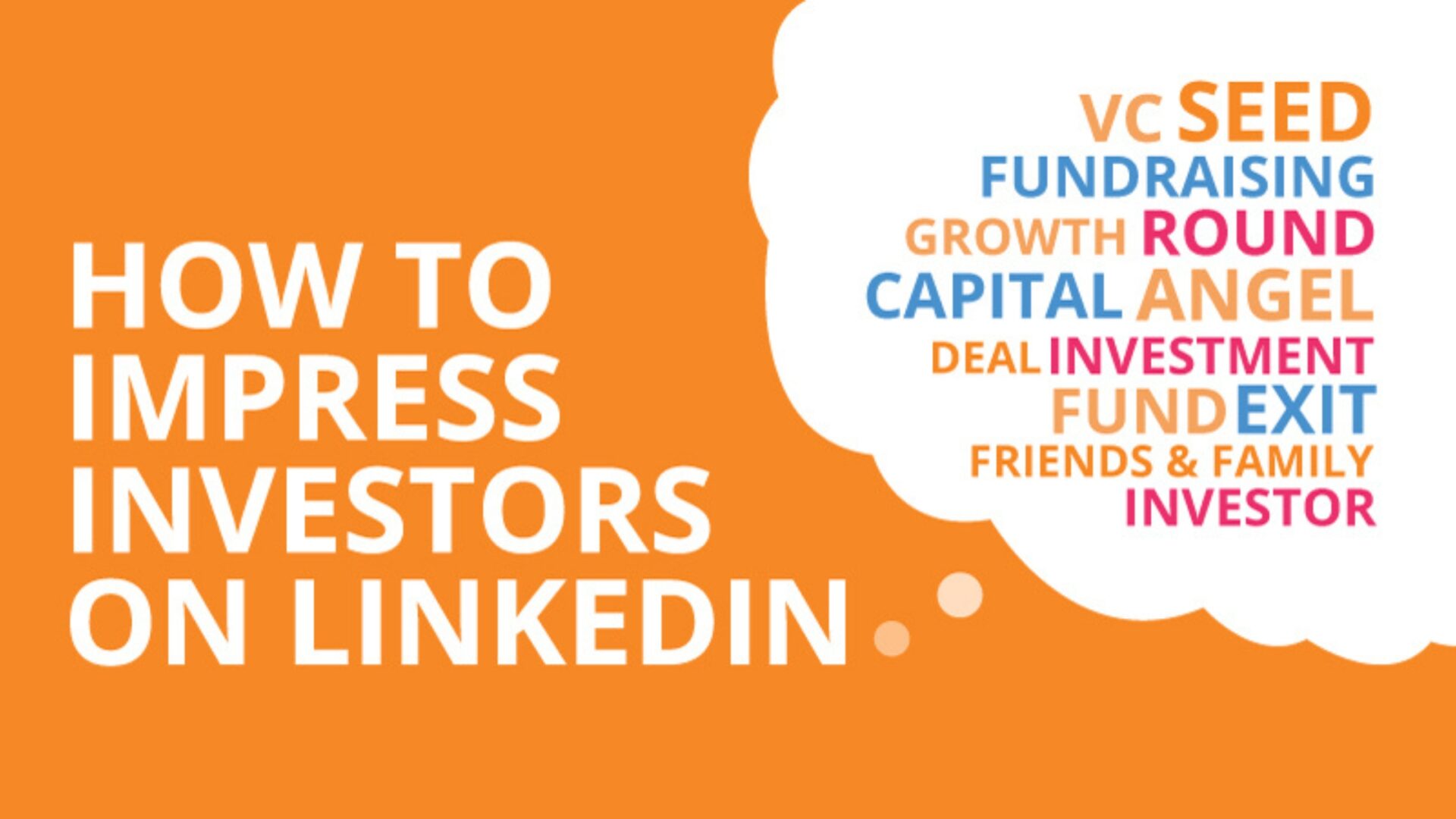Fundraising is much more intense than anything else you do. When you are raising a round, you need a proven track record, impressive business credentials, and a compelling vision — and you know every aspect of your business is going to receive intense scrutiny from extremely intelligent people who have hundreds of other investment opportunities. How do you sell them on choosing you?
A necessary first step, especially in today’s times of virtual meetings, is to make sure your online presence is on point — as strong as you can make it — so the investor who checks you out on LinkedIn gets all the information you want them to have.
The Basics
“We live and die by our founders,” global finance guru Peter Thiel told Harvard Business Review in a spring 2021 article on what venture capitalists look for in startups.
The first thing an investor will look for is the founder’s work experience; the second is their education.
Make sure those sections of your LinkedIn profile include every asset you have. In your Experience section, include exits, achievements, and the scope of your roles. In your Education section, mention honors and awards. (Yes, there is an additional section on your profile for honors and awards, but make the information easy to find.)
Talk about your traction: How much did you raise in earlier rounds? Who led those rounds? Were any large organizations involved?
Tell stories, especially in the About section of your profile. What spurs you to get up every morning and go to work? Why are you putting your career on the line for a new idea? Why are you the one person who can make this succeed? Your founding story is motivational. When you share your passion, you make it easier for others to hop on your bandwagon.
Include data: Mention well-known customers, the number of customers you have or serve, the volume of transactions, ROI achieved. Look through your deck and incorporate the most impressive data into your profile.
Consider additional ways to build credibility. Do you have articles about your business, news clips from interviews, speaking engagements, podcast interviews, TED Talks, books, eBooks, or white papers you can share? Add them all to the Publications section (in Accomplishments), and include the most impressive two or three in the Featured section, where they will draw the reader’s eye.
Patents provide validation of your innovation; certifications display technical expertise. If you hold membership in professional organizations, especially leadership roles, include them.
It’s Who You Know
The biggest takeaways from HBR’s research? “VCs rely on their networks to identify investment opportunities, considering about a hundred for each deal they eventually close,” and “More than 30% of deals come from leads from VCs’ former colleagues or work acquaintances.”
I’m sure you already connect with every investor you meet, but make sure to also connect with other founders, CEOs, and service providers who work with funded companies. The investors who view your profile can see what connections you have in common. Their network will be high quality — let them see that yours is, too.
Once you build a strong network, keep your name in front of people who can make referrals. Engage with your connections, offer insightful comments on their posts, and tag people you think offer interesting perspectives.
Follow thought leaders on LinkedIn. Commenting on their posts exposes you to their network — and, potentially, new connections.
Ask for recommendations from former employers, partners, vendors, and people who worked for you. Suggest talking points to make the writing process easier for them (and help ensure you get the quotes you want). Just as importantly, offer recommendations to other people. Your comments illustrate your leadership style and the culture you have created in your business.
Above all, always be polite and respectful — even when you disagree with others. How you handle controversy online will show VCs how you handle tough situations.
You’re a Team
HBR says the single biggest factor investors care about (and that has the best correlation with results) is a startup’s team. Backers invest in people more than they invest in ideas.
Show how your team is uniquely qualified to deliver on the vision of your business. The LinkedIn profiles for all senior leaders should showcase their strengths, track records, credentials, and networks.
With smaller startups, the team should prove they are committed to the enterprise. That means their profiles need to show your company as their current employer.
Think about alignment in a creative way. Leadership profiles need to convey a consistent message, and everyone should share those ideas in their own voice. Each profile needs to bring out the individual’s qualifications for their specific role — why they’re the chief technology officer, chief revenue officer, or chief marketing officer. Tell the story of what each executive brings to the table and why the team as a whole is uniquely qualified to capitalize on your opportunity.
You might wonder about LinkedIn company pages. When it comes to investors, company pages matter, but the more valuable investment is your team presence.
Get to Work — and Get that Money
Now that you know how you can use your LinkedIn profile to impress investors, it’s time to make some changes. We have developed a new LinkedIn profile checklist for founders who are looking to impress investors. Check it out!

